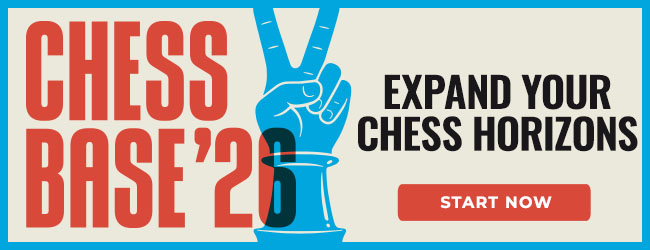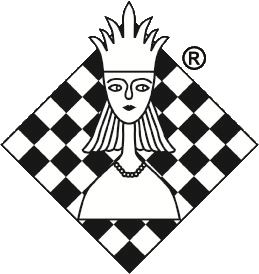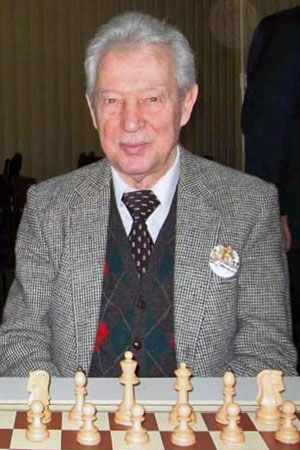 Svetozar
Gligorić: 2 February 1923 – 14 August 2012 Svetozar
Gligorić: 2 February 1923 – 14 August 2012
The legendary Serbian grandmaster Svetozar Gligorić died in Belgrade
on August 14 after suffering a stroke. He was 89 years old. Gligorić
as buried on Friday at 13.30 in the Alley of the Greats at Belgrade's
New Cemetery (Novom Groblju).
Gligorić came from a poor family in Belgrade and starting playing
at the age of 11, when he was taught by a boarder living in the house.
He made his first chess set by carving the corks of wine bottles, and
won his first tournament in 1938, four years after he had learnt the game.
He went on to become one of the world's leading players, and was one of
the world's top ten in the 1950s and 60s. He won the Yugoslav Championship
twelve time, and represented his country with great success in fifteen
Chess Olympiads.
Gligoric made significant contributions to the theory and practice of
the King’s Indian Defence and the Ruy Lopez. He was fluent in several
languages, and worked as a professional journalist and organiser of chess
tournaments. Besides chess his most enduring passions was music, and in
2011 he released a CD featuring compositions that drew on jazz, ballads
and rap. |
Jean-Luc Oesch of Belgrade, Serbia, wrote us: "Thanks to your nice article
on Gliga, I was alerted and had the privilege to attend Mr. Gligoric' funeral.
It was attended by around 300 people, amongst whom the new Prime Minister Ivica
Dacic, the new Minister of Youth and Sport (and chess champion Alisa Maric)
and many personalities such as basketball legend and former Lakers star Divac.

Gligoric's friend Aleksandar Matanov delivering a eulogy in the Belgrade
City
Assembly (picture Politika newspaper)
It was a nice day, very sunny and nice speeches were telling stories about
Gligoric, not only about his chess life, but also, as your article rightly pointed
out, about his other passion: music. A great man and sad loss for the chess
community. Jean-Luc Oesch, Deputy Head of Swiss Embassy in Belgrade and (modest)
chess player."
Remembering Svetozar Gligoric
By Kiril Penušliski
For a kid growing up in Yugoslavia there was no greater chess hero then Gligoric.
Kasparov was an opponent. He was the man who I imagined sitting across the board
from me. He was the one who was going to crumble under my stare and wince because
of my moves. But, Gligoric? Gligoric was the example I wanted to follow. Gligoric
was my teacher, a mentor whose games taught me how to play chess and hopefully,
when I finally got around to beating Garry, my trusted second who was going
to guide me with his wisdom and his knowledge.
Perhaps I had a slight preference for the torrential quality of Borislav Ivkov’s
best games, but Gliga... it was impossible not to love him. I don’t think
I ever saw a photograph of him where he wasn’t smiling. One look was enough
to realize that you had a good person in front of you; someone who is kind and
noble.
As a chess player, for twenty years he was a member of the elite, the very
best. It’s not only his results which impressed me, his successes at the
candidates tournaments, the wins he gathered for the Yugoslav Olympic team,
or the fact that he won the Yugoslav championship almost every time he felt
like it. It is the kind of chess he played. There is a wonderful lucidity to
his best games. As a player whose style was a curious mixture of Rubinstein
and Capablanca, he was extremely objective and never bogged down by chess dogma.
All those things we ordinary mortals aren’t supposed to do, you will find
them all in his games! But always as a part of a sound plan, and never as a
whimsical frivolity.
Although his name is still spoken with the upmost respect everywhere chess
is played, most people don’t know enough of his games. As a rule, his
win over Petrosian from the 1970 Rovinj Zagreb tournament is used as an example
of his play. A sacrificial King’s Indian versus one of the best defenders
in the history of our game. But here I would like to show you a few other games,
some well known, others less so. The games are all presented with already published
analysis, which I hope will better illustrate not only his playing style and
strength, but also Gligoric’s modesty and clear chess logic.
Game one, Gligoric-Keres,
This comes from one of the Yugoslavia vs USSR matches (1958, Zagreb). Usually
the powerful Soviets would win; the only question was what the score would be
like. But this time the match on board one (Gligoric-Keres) was a 2-2 draw.
The game we have chosen is a Rubinstein Nimzo-Indian. Later people will finally
learn that playing a Nizo-Indian versus Gliga was not good for your health;
a lesson Keres hadn’t mastered yet. The game is presented with Gligoric’s
own comments, very humble and to the point.
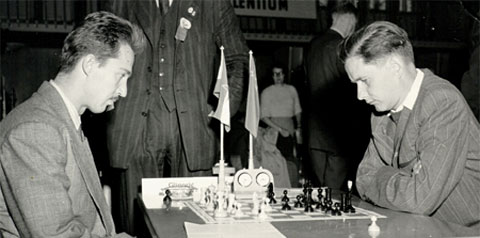
Gligoric vs Keres in an earlier encounter (Helsinki 1952)

[Event "URS-YUG"] [Site "Zagreb"] [Date "1958.??.??"] [Round "3"] [White "Gligoric,
Svetozar"] [Black "Keres, Paul"] [Result "1-0"] [ECO "E43"] [Annotator "Gligoric,Svetozar"]
[PlyCount "53"] [EventDate "1958.??.??"] [EventType "team"] [EventRounds "4"]
[EventCountry "YUG"] [Source "ChessBase"] 1. d4 Nf6 2. c4 e6 3. Nc3 Bb4 4. e3
c5 5. Bd3 b6 6. Nf3 Bb7 7. O-O O-O 8. Bd2 cxd4 9. exd4 d5 10. cxd5 Bxc3 11.
bxc3 Qxd5 ({Significantly weaker was} 11... exd5 12. Bg5 Qd6 13. Bxf6 Qxf6 14.
Ne5) 12. c4 ({I felt that the continuation} 12. a4 {and} -- 13. Rb1 ({or} 13.
Re1 {are not dangerous, so after a long think I decided on this move, which
forces the black queen away from the strongest square. White's hanging pawns
are less in danger then they seem at first glance.})) 12... Qd6 13. Bc3 Nbd7
14. Re1 Rac8 ({On} 14... Ng4 15. h3 { is very strong because the white king
has a shelter on f1; this on top of the fact that in those cases Black has to
count on a sacrifice on h7 or d4-d5.}) 15. h3 Rfd8 ({There is nothing to be
gained from} 15... Nd5 16. cxd5 Rxc3 17. dxe6 fxe6 18. Ng5) ({or from} 15...
b5 {becasue of} 16. Rb1 ({or even} 16. c5 { if white doesn't want to take the
exchange})) 16. Re3 {From here the rook both protects and attacks. We arrived
at the same position in the first game of the match, but from a different move
order.} Nh5 $2 ({White is more active, but there is a certain balance in the
position, which Black, wanting to take some action, disrupts with his last move.
More solid was} 16... h6 {as Keres played in the first game}) ({while} 16...
b5 {doesn't work because of the interpolation} 17. Ba5) 17. d5 $1 Nc5 ({On}
17... exd5 18. Nd4 {Black doesnt have a good defence against} -- 19. Nf5) 18.
Ng5 ({Other possibilities were not clear enough} 18. Bxh7+ Kxh7 19. Ng5+ Kg6
20. Nxf7 Kxf7 21. Qxh5+ Kg8 {and if} 22. Bxg7 (22. Rae1 $1 {noted by Udovic
was also interesting}) 22... Kxg7 23. Rg3+ Qxg3) 18... g6 19. Be2 Ng7 {The most
persistent move} ({On} 19... Qf4 20. Bxh5 Qxc4 ({or} 20... Qxg5 21. Qd4) 21.
Qf3) (19... exd5 20. Qd4 f6 21. Bxh5) 20. Qd4 Qf8 21. Qh4 {It was important
to secure that the knight remain on g5 as Black with h7-h6 would consolidate.
The exchange on g7 would bring a pawn, but now that is too little} h5 22. Bg4
$1 ({Weaker was} 22. g4 -- { because} 23. gxh5 {would not work because of the
interpolation} Nf5 {The move in the game prevents the sortie of Black's knight
and hits the point e6}) 22... f5 $2 ({Due to lack of time, Black weakens his
position. A tactical chance was } 22... Bxd5 23. cxd5 Rxd5 24. Bf3 {but White
can even give an exchange due to his irresistible attack on the kings wing})
23. Nxe6 Ngxe6 $2 {Speeding up the defeat which could no longer be avoided}
24. dxe6 Re8 25. Bxh5 Qh6 (25... gxh5 26. Rg3+) 26. Qf6 f4 ({Played due to lack
of time!} 26... Rf8 27. Qxg6+) 27. Qf7# {S. Gligoric, Jugoslavenski Sahovski
Glasnik, n. 7, 1958} 1-0
Game two, Gligoric-Botvinik
This game comes from the 3rd Euro Team Championship, which took place in Hamburg
1965. The tournament was a ten board double round robin. The first game between
the two ended in a draw in 72 moves. Interestingly, this was a fight on board
two, as Ivkov was playing board one for the Yugoslav team (it was his year,
he won a number of tournaments and progressed to the Candidates finals where
he unfortunately and somewhat surprisingly lost to Larsen). But Gligoric had
the best result of all the Yugoslav players and also the best result on board
two, 7/10.

The first time I saw the game I was very impressed by white’s logic,
especially in the opening. He was willing to switch from one idea, one plan
to the next without any hesitation. I particularly found the sequence of good
moves 12.Qa4! 13.h3! 15.Nd4! very impressive. The comments are by Gligoric and
they show his modesty. He just beat one of the best players in history, but
there is nothing to suggest that. There is no reference to Botvinik; truly a
case of ‘I play against the pieces’.

Three-time World Champion Mikhail Moiseyevich Botvinnik

[Event "EU-chT (Men)"] [Site "Hamburg"] [Date "1965.??.??"] [Round "8"] [White
"Gligoric, Svetozar"] [Black "Botvinnik, Mikhail"] [Result "1-0"] [ECO "B12"]
[Annotator "Gligoric,Svetozar"] [PlyCount "81"] [EventDate "1965.??.??"] [EventType
"team"] [EventRounds "10"] [EventCountry "GER"] [Source "ChessBase"] 1. d4 g6
2. e4 c6 3. f4 {One of the methods of fighting this defence. Now that undermining
of the centre with c6-c5 would be a waste of time.} d5 {With 3... d6 Black would
go into one of the variations of the Pirc defence, but with small prospects
for the fight for the centre.} 4. e5 c5 {Wanting direct counter play in a confined
position Black is taking risks, expecting that there will be pressure on d4.
But....} 5. dxc5 $1 ({On} 5. c3 cxd4 6. cxd4 Nc6 {Black would have a target
on which he could build his counter play. After the move in the game he cant
take back the pawn advantageously because of the strong pressure on d5. But
although Black already has a difficult position, white must follow up his play
precisely so to avoid possible dangers.}) 5... Nc6 6. Nf3 Bg4 7. Be2 e6 ({Weaker
was} 7... Qa5+ 8. c3 Qxc5 {because of} 9. b4 {and the d5 pawn falls.}) 8. Be3
Nh6 9. c3 Nf5 10. Bf2 h5 ({On} 10... Bh6 11. g3 {would follow because after}
g5 12. Nxg5 {Black is forced to play} Bxe2 13. Qxe2 Bxg5 14. fxg5 Qxg5 15. Nd2
{and White has a pawn plus.}) 11. Nbd2 Bh6 { Since he cant make any progress
on the Q side, black's only chance is to undermine the centre from the kings
side. Black's pieces are active and the position in sensitive to the smallest
mistake by white.} 12. Qa4 $1 ({Now g3 would be bad because after} 12. g3 g5
13. fxg5 Bxg5 {Black can simply take on g5 and the e5 point would be seriously
threatened.}) 12... g5 13. h3 $1 ({ Taking on g5 would give the initiative to
the opponent because it would open up all the diagonals and the passive} 13.
g3 gxf4 14. gxf4 d4 {with taking on g4 would also lead to complications. After
the move in the game Black is forced to take the pawn on f4 and pay dearly for
the restored material, his bishop on h6 remains 'dead'.}) 13... Bxf3 14. Nxf3
gxf4 {g5-g4 was not a threat as it would open up the h file to whites favour.}
15. Nd4 $1 {The point of White's 12th move. The most important piece, the N
on f5 is forced away from his excellent spot. Black doesn't have the time to
jump to e3 or g3 and revive his B because of the threats to c6, h5.} Qc7 ({Allowing
the weakening of his pawn structure, because he didn't like} 15... Nfxd4 16.
cxd4) ({or} 15... Nfe7 16. Bb5) 16. Nxf5 exf5 17. O-O Kf8 {One of the weakness
of blacks position is that he doesn't have the possibility to castle} 18. Bd4
Re8 ({On} 18... Nxe5 {White should not be afraid of the bishops of opposite
colours as he can play} 19. Bxe5 Qxe5 20. Bf3 Qe3+ 21. Kh1 Qxc5 22. Qd7 {and
White gets back the material with a strong attack.}) 19. Bf3 Rg8 20. Rae1 {Black's
position is strategically lost, so White doesn't take the pawn on d5 so not
to gave his opponent any tactical chances} Qd7 (20... Nxe5 21. Bxe5 Rxe5 22.
Rxe5 Qxe5 23. Qxa7 {And Black loses on the Q side while he has no counter play
on the other wing.}) 21. Qb3 Rd8 22. Qc2 Ne7 23. Bxh5 Ng6 {Bf7 was threatened.}
24. Bxg6 Rxg6 ({On} 24... fxg6 25. e6 {would follow.}) 25. Rf3 Kg8 26. Qf2 Qe7
{Not allowing the white Q to reach h4.} 27. Rf1 Kh7 28. Qc2 Qe6 29. b4 Rdg8
30. R1f2 a6 31. a4 Qd7 32. Kh1 R8g7 33. Qb3 Rg8 {Black is forced to wait for
White's action.} 34. b5 axb5 35. axb5 Ra8 36. Qb1 Ra5 37. Rb2 Kg8 38. Rf1 Ra8
39. Rbf2 {Due to lack of time White does not decide on an immediate e6!} Rg3
40. Rb2 Rg6 41. c6 {After 41...bc6 42. b6 Qb7 43. Ra2 White's pawn is unstoppable.}
1-0
Kiril Penušliski is a Macedonian
art historian with tempestuous hair, an expert in Italian Renaissance
art and is supposedly writing his doctorate (the last pages), but can
on most nights be found playing on the Playchess.com
server.
He learned to play chess at age six and formerly played second board
for the Penušliski family team (comprising of: first board Dr. Kiril Penušliski
(now deceased), second board Kiril Penušliski Jr., third board Ilija Penušliski
and fourth board Ilija Penušliski Jr.). His most lofty goal and ambition
in life is some day to learn how to avoid making mouse slips.
See also: The
Contemporary Chess Art of Ilija Penušliski, by Kiril Penušliski |
|
Copyright
Penušliski/ChessBase














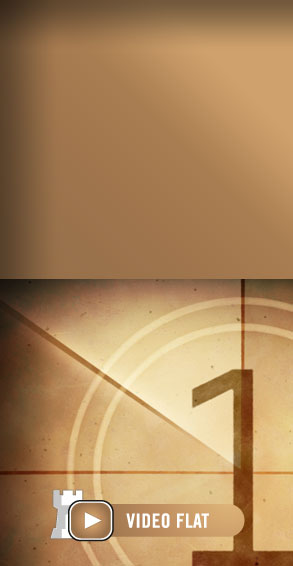
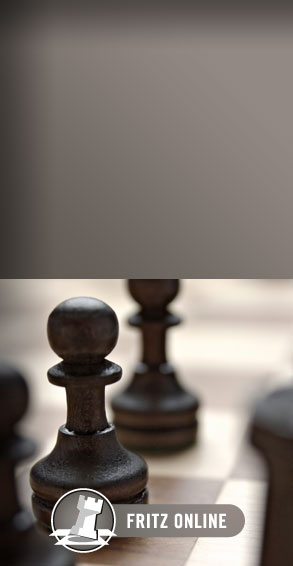

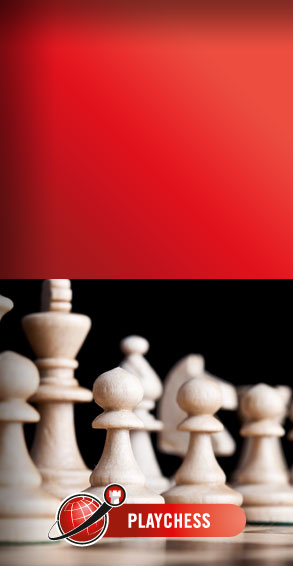
 Svetozar
Gligorić: 2 February 1923 – 14 August 2012
Svetozar
Gligorić: 2 February 1923 – 14 August 2012





